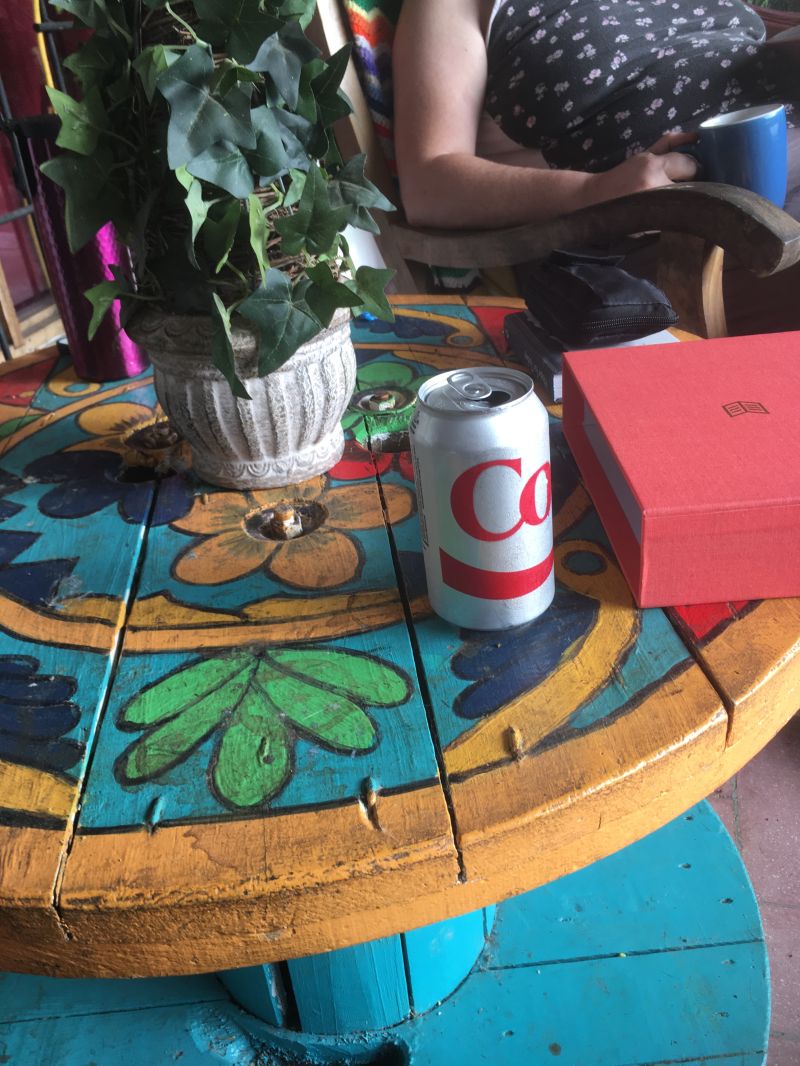 As a Catholic non-fiction acquisitions editor, I hear it all the time: “If I have to do the lion’s share of the marketing and selling of my own book, why do I need a traditional publisher? Why not just publish with _______ (CreateSpace, Leonine, Xulon, etc.) and have them produce it for me at $2 or so a copy?”
As a Catholic non-fiction acquisitions editor, I hear it all the time: “If I have to do the lion’s share of the marketing and selling of my own book, why do I need a traditional publisher? Why not just publish with _______ (CreateSpace, Leonine, Xulon, etc.) and have them produce it for me at $2 or so a copy?”
Let’s set aside the financial assumptions aside for the moment (though you can rest assured that at the end of the day those books are going to cost a lot more than $2/copy). Any publishing venture, to succeed, must be a partnership, with each party fully invested in the process from start to finish.
Please bear in mind that I am not experienced in fiction… Some fiction authors have had good experiences with Indie presses, and pointedly let me know that there is more to the story. But THIS article is based on my experience in Catholic non-fiction.
Step 1: The Proposal. At the front end of the process, a professional editor will work with an author to modify or even create a proposal that thoroughly and accurately maps out the purpose and promise of the project. Market study of competing books. Trends that suggest a need for that particular title. Sales history of similar titles (and yes, there are nearly always competing titles). Author platform and marketing contacts. A thorough review of outline and sample chapters, sometimes with multiple rounds of feedback.
With self-publishing, you hand in your manuscript and hope it will sell. Most times… it doesn’t.
Step 2: The Contract. If the proposal makes it to the acquisitions meeting, the author will receive additional rounds of feedback with the contract. All of this to ensure the book concept is as strong and competitive as possible. With that contract, you also receive (one would hope) an advance against royalties, and a commitment to put at your disposal years of industry experience in the form of editors, designers, marketing and sales staff, and other publishing professionals who will help you develop, position, package, and market not just one book, but your brand as well. Instead of investing your own money in the editing, designing, printing, and marketing of your book … you work with your team to prepare your book to be launched further and faster than you ever could have hoped to do on your own.
With self-publishing, you hand them a check (or credit card). You assume the financial risk of the development costs. And, generally speaking, you get what you pay for. At the end of the day, the publisher gets the fees … and you get the right to buy books. Period.
Part of what the publisher contributes to this partnership is its reputation — particularly in the Catholic market. The right imprint will open doors. (I’ve seen it over and over in trade shows: “Oh, I never buy from ___. They aren’t really Catholic.” Or, “I know I can trust ____. I’ve bought from them for years.”) Some of that reputation comes from the theological training of the editorial staff — and some of it comes from “guilt by association” — other authors published by that imprint. If you want just one example, think of the kerfuffle at Simon & Schuster over their contract with Milo Yiannopoulos. On a more positive note, I think of the camaraderie and help I’ve seen more experienced authors give other, newer authors. This kind of networking is invaluable — and simply doesn’t happen in self-publishing.
Step 3: Product Development. A good traditional publisher guides the willing author through every step of the production process to help that author put his (or her) best foot forward:
A professional editor who will commiserate as they “killing their darlings” and overriding their personal quirks, and providing the voice of reason when their nearest and dearest are cheering them on … and not telling them the cold, hard truth about what works, what doesn’t, and why. She will also guide the author through the minutiae of fair use and permissions, hacking away to improve flow, clarity, tone, and rid your precious book of a hundred other bugaboos. Best of all, when we finally tell you that you’ve done a good job, you’ve become a better writer in the process.
A good designer will work with the team, the author, and a whole slate of other graphic artists to capture — as uniquely and memorably as possible — the content of the book in a way that appeals to its intended audience.
A self-publishing company will give you a range of choices and prices … and you pay for custom designs without any real sense of how well the cover you’ve slaved over so long will actually attract your customer. Same goes for interior design. (Admittedly some authors need more help than others!)
Step 4: The Launch. In the months leading up to a book’s release and for at least a year afterwards, authors work as hard at promoting their books as they did at writing them. If you are with a traditional publisher, you will have the benefit of a professional marketing staff that knows their audience — who will be interested, and who won’t — and has established contacts throughout the industry: media, bookstores, distributors, conferences, trade shows, and every imaginable forum. They create catalogs, brochures, flyers, signage, metadata, ads, and make all kinds of tangible and intangible connections on your behalf. They know they have only a short time for the book to “catch,” and limited resources. And so they tend to look for “hungry” authors, and figure out how to complement and support those efforts.
A good publicist is an author’s best friend. S/he secures interviews and reviews, puts authors up for awards, pitches them as presenters at conferences and trade shows, and gives out long-as-your-arm laundry list of things authors need to do to strengthen their brand. If you’re smart, you’ll get to work and check each of those items off your list well in advance of the release of your book! Someone handles foreign rights, subsidiary rights, audio rights, electronic/digital rights. So many ways to get your message on the market.
So … can you make more money with a self-publishing deal? Perhaps. Just like you save more money by moving yourself across the country, rather than paying professional movers to do it for you. But is it worth it?
Some authors think so, especially those who have had negative experiences with traditional publishing (and there are those horror stories out there, often because expectations aren’t managed properly at the front end of the deal, or because the players change mid-stream). The same is true for those who can’t find a traditional publisher to take their work. Self-publishing may be the best option for these authors.
On the other hand, there can be real benefits to going with a traditional publisher. A traditional publisher shoulders the financial risk and up-front costs associated with development, printing, and marketing. An author can still purchase copies of their book at a significant discount (up to 65% for large quantities) … knowing that they have professionals handling things behind the scenes, freeing them to build up other aspects of ministry/brand.
And you ‘re worth it!
Life on the Road Less Traveled


 Hello! I’m putting the final touches on my talk for the
Hello! I’m putting the final touches on my talk for the  Are you ready to improve your media skills and learn how to use your written works as a jumping off point for great media interviews and public presentations? Join me and my co-host, Rick Erisman (4:00 PM ET, Tuesday, Oct. 16), for a lively, one-hour Zoom presentation, and learn my top ten tips for promoting yourself by promoting your writing! Get asked back, grow your network, and magnify your impact exponentially!
Are you ready to improve your media skills and learn how to use your written works as a jumping off point for great media interviews and public presentations? Join me and my co-host, Rick Erisman (4:00 PM ET, Tuesday, Oct. 16), for a lively, one-hour Zoom presentation, and learn my top ten tips for promoting yourself by promoting your writing! Get asked back, grow your network, and magnify your impact exponentially! 

 As a Catholic non-fiction acquisitions editor, I hear it all the time: “If I have to do the lion’s share of the marketing and selling of my own book, why do I need a traditional publisher? Why not just publish with _______ (CreateSpace, Leonine, Xulon, etc.) and have them produce it for me at $2 or so a copy?”
As a Catholic non-fiction acquisitions editor, I hear it all the time: “If I have to do the lion’s share of the marketing and selling of my own book, why do I need a traditional publisher? Why not just publish with _______ (CreateSpace, Leonine, Xulon, etc.) and have them produce it for me at $2 or so a copy?” Last week I received a gracious note from Melanie Rigney, reminding me of just how far our connections went! Melanie is a veteran writer and author of several wonderful books including
Last week I received a gracious note from Melanie Rigney, reminding me of just how far our connections went! Melanie is a veteran writer and author of several wonderful books including  One of the unexpected gifts of unemployment has been being on the receiving end of so many generous gestures from people I’ve worked with over the years, all of whom have encouraged me beyond words (that’s a LOT of encouragement) with their gestures of love and solidarity.
One of the unexpected gifts of unemployment has been being on the receiving end of so many generous gestures from people I’ve worked with over the years, all of whom have encouraged me beyond words (that’s a LOT of encouragement) with their gestures of love and solidarity.